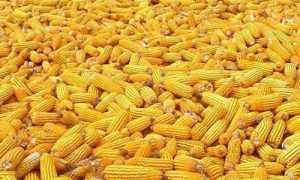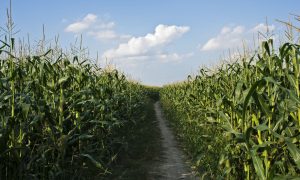Push-pull practices ‘control pests, increase maize yields’

So-called “push-pull” agricultural practices that aim to improve crop yields by minimizing the use of synthetic herbicides and insecticides increases yields and prevents pests from adapting over time, a study shows.
Researchers on the study, published in Agriculture, Ecosystems and Environment, assessed the extent to which the introduction of the push-pull system in western Kenya has impacted variations in crop yields and pest abundance for insects and parasitic weeds over time.
According to the researchers, the push-pull system uses two companion crops alongside a main crop such as maize, with the “push” plant (such as a legume) planted in rows in between maize and the “pull” plant (such as Napier grass) planted as a perimeter around the edges of the maize field.
The “push” plant repels adult female moths when they look for a place to lay their eggs. The females then travel to the edge of the field and are attracted to the “pull” plants, which attract them to lay their eggs but are poor hosts, thereby leading to at least 80 percent of the larvae dying before reaching adulthood.
“The key finding of our study is that push-pull actually gets better the longer it is established,” said Tim Luttermoser, the study’s lead researcher and a doctoral student at Cornell University’s Department of Entomology in the United States.
He tells SciDev.Net that the push-pull combination technology led to “massive yield benefits for farmers”, usually between double and triple yields compared to farms with non-push-pull technology.
“We found that pest abundance was lower and [maize] yield higher in older push-pull fields very consistently across a wide geographic and time range,” says Luttermoser. “We also found some evidence that non-push-pull farms might benefit from being near older push-pull fields.”
“Stemborer [moths] and striga [also called witchweed] were both less abundant on control fields paired with older push-pull fields, although the yield was not affected.”
The findings that the abundance of pests in the push-pull system decreased over time suggests that the benefits of using the technology to control pests could last for many years.
The researchers add that ecologically intensified pest management systems such as push-pull systems are more durable than chemical pesticides as pests frequently evolve pesticide resistance but rarely adapt to overcome ecologically intensified systems.
“While there is often some start-up cost and labor involved, reduced pesticide costs year over year can be a substantial economic benefit,” says Zeyaur Khan, a co-author of the study and program leader of push-pull integrated management technology at the Kenya-headquartered International Centre of Insect Physiology and Ecology.
While the study period was before the fall armyworm invasion in Africa, the authors argue that push-pull remains effective even against fall armyworm as proved by other studies and expect that these results will continue to hold true even in the presence of fall armyworm.
Matilda Ouma, a lecturer in the Department of Agricultural Economics and Agribusiness Management at Jaramogi Oginga Odinga University of Science and Technology in Kenya, says that the study shows that research is evolving and the push-pull technology is getting better.
Ouma, who has adopted the technology on her farm, says that scientists working on the push-pull system have been improving the technology to ensure it adapts to ecological changes.
She agrees with the study that the push-pull system can significantly help improve yields and even soil fertility while being resilient against crop pests.
Source Link: https://phys.org/news/2023-06-push-pull-pests-maize-yields.html

















